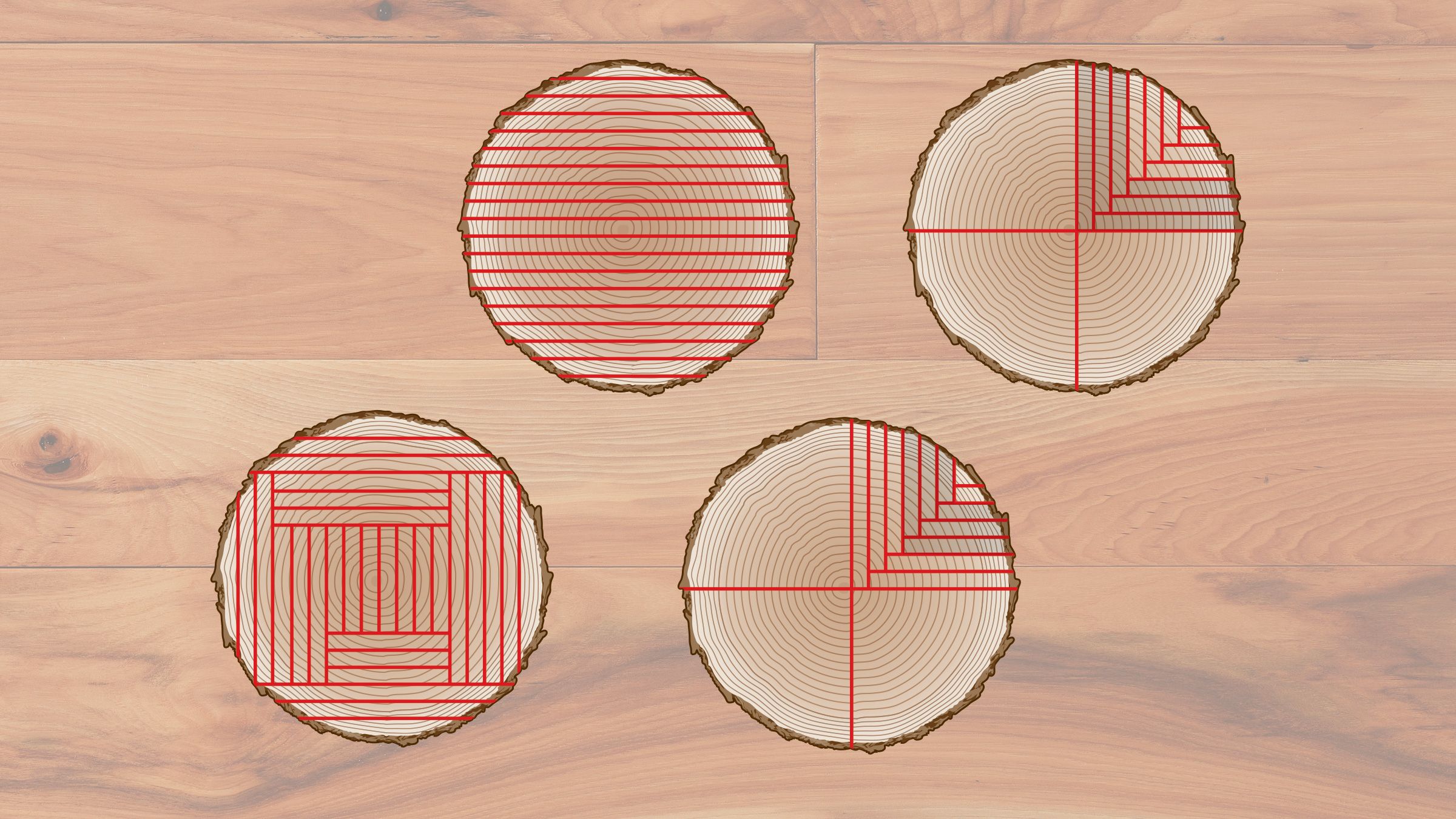This article appeared in the Spring 2021 issue of This Old House Magazine.
I’d like to install solid white oak flooring in our living and dining rooms. The flooring will come from trees harvested on our property and then kiln-dried. Can I mix flatsawn and quartersawn pieces? —Charles Rudduck, Deckerville, MI
You can, but I’d be a little hesitant to mix quartersawn and flatsawn pieces—their different grain patterns might look odd when placed next to each other.
What Causes Grain Pattern in Wood?
Wood grain’s appearance largely depends on the way a board is cut from a log. You can see how the cut was made by looking at the end of the board and noting how the growth rings are oriented relative to the board’s face.
In quartersawn or rift-sawn pieces, the tree rings run more or less perpendicular to the face, which typically has a grain pattern that’s straight, even, and narrow. In flatsawn (also called plain-sawn) boards, the rings are more or less parallel to the face, which has a wide, curving grain.
How Does Humidity Affect Wood?
How a board is cut also determines how much it will move as the humidity changes. Even when dried, wood continues to swell and shrink in width, but how much it moves depends on the grain direction. Quartersawn pieces remain fairly stable as the humidity fluctuates, while flatsawn pieces are going to expand and contract much more. In a floor, that means flatsawn boards are more likely to cup in the summer or gap in the winter.
Live-sawn boards contain a mix of vertical and flatsawn grain because they were cut with a blade that made parallel slices all the way through the log. (These are the kind of boards produced by portable sawmills.)
Boards cut this way can be quite wide, but without additional milling, their inconsistent grain orientation can create internal stresses as wood reacts to changes in humidity, and cause the board to warp and twist. (Ripping them down to a narrower width with a more consistent grain ought to make them better behaved.)
I expect most of your flooring will be flatsawn or live-sawn. Still, keep your eye peeled for quartersawn pieces, which often have dramatic flecks. They could make nice accents at doorways or at stairs.
How Wood is Cut Determines How it Looks
1. Quartersawn white oak (gray tint)
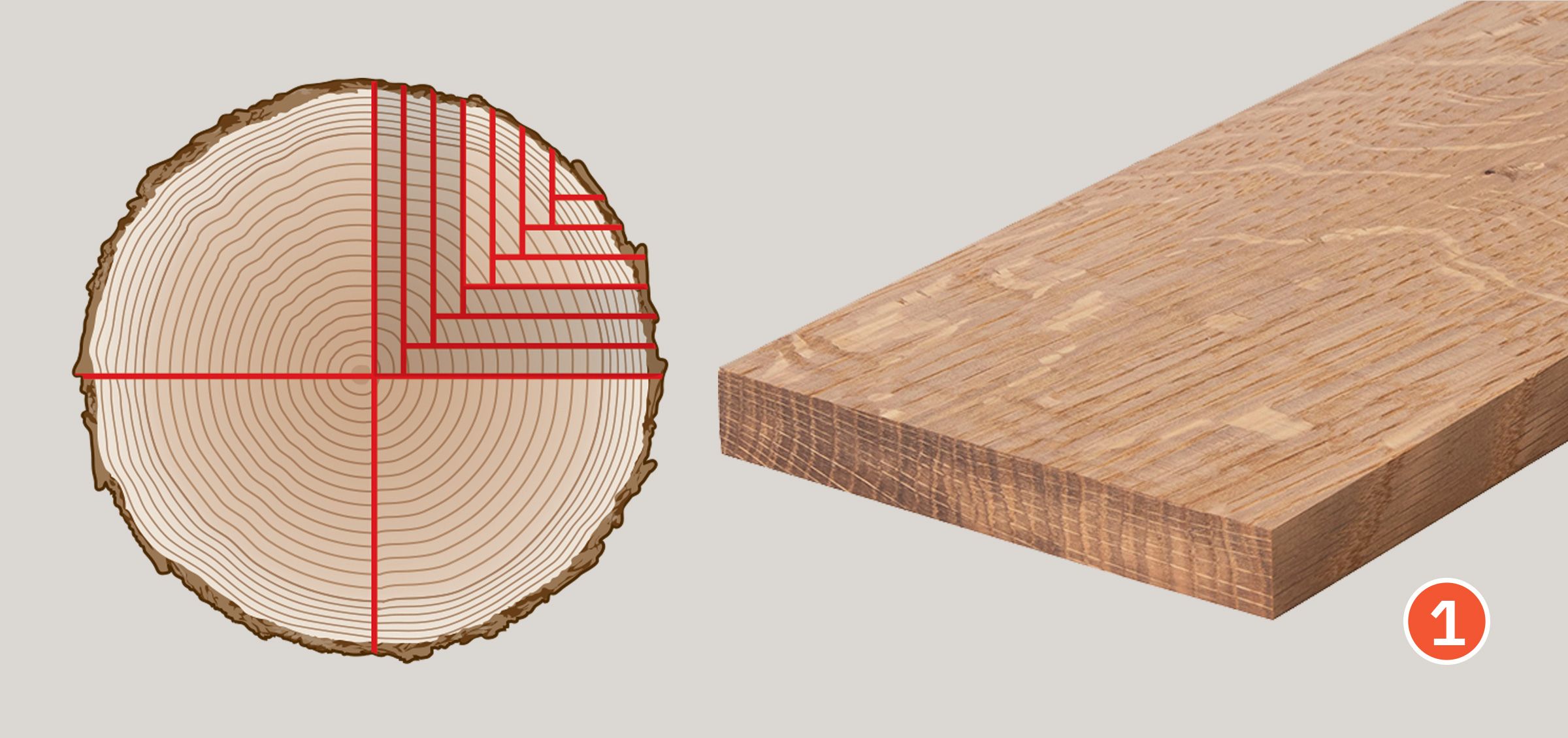
This is the most stable cut, and more expensive than flatsawn; the face often contains flecks.
2. Rift-sawn white oak (gray tint)
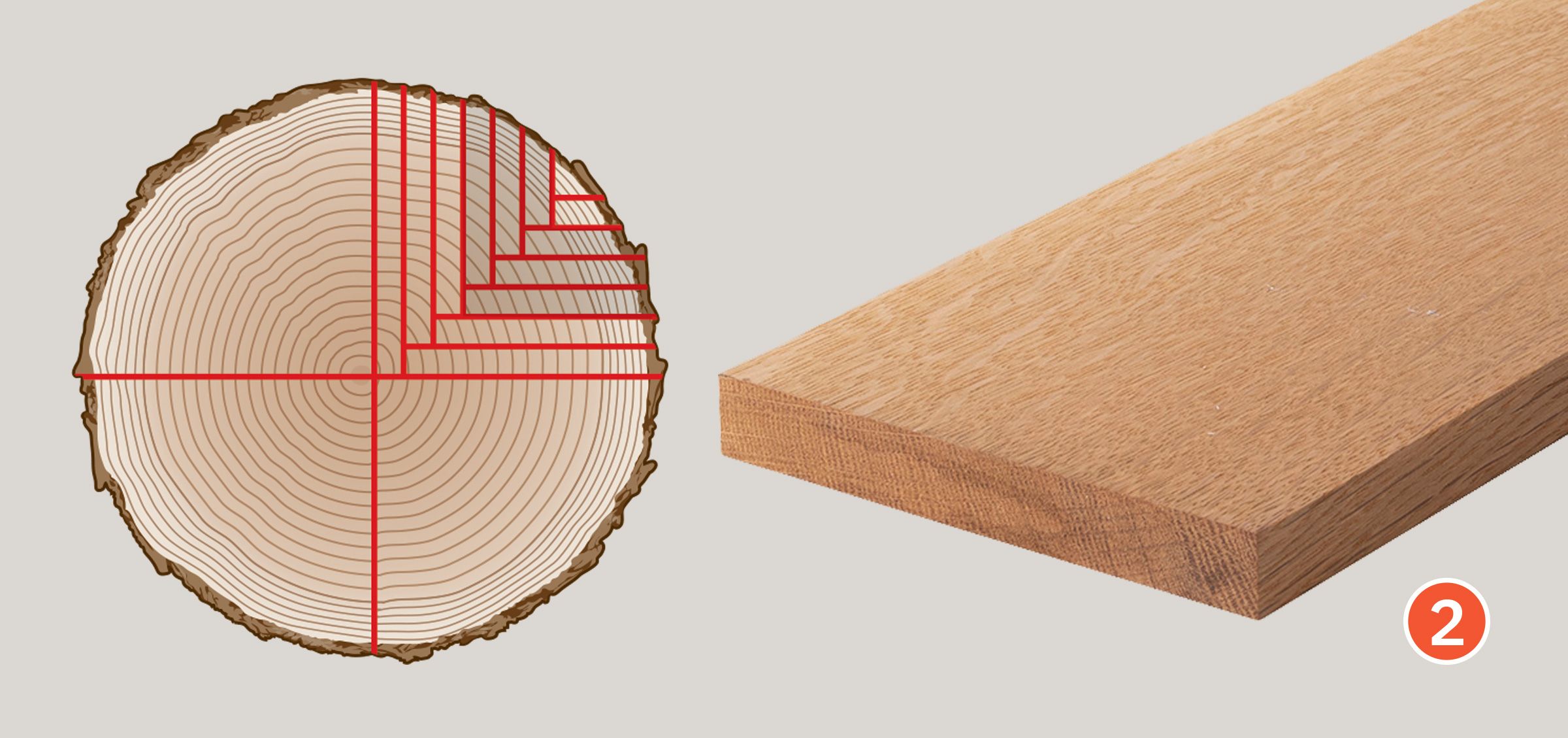
Its diagonal end grain creates a straight, even face grain.
3. Flatsawn white oak
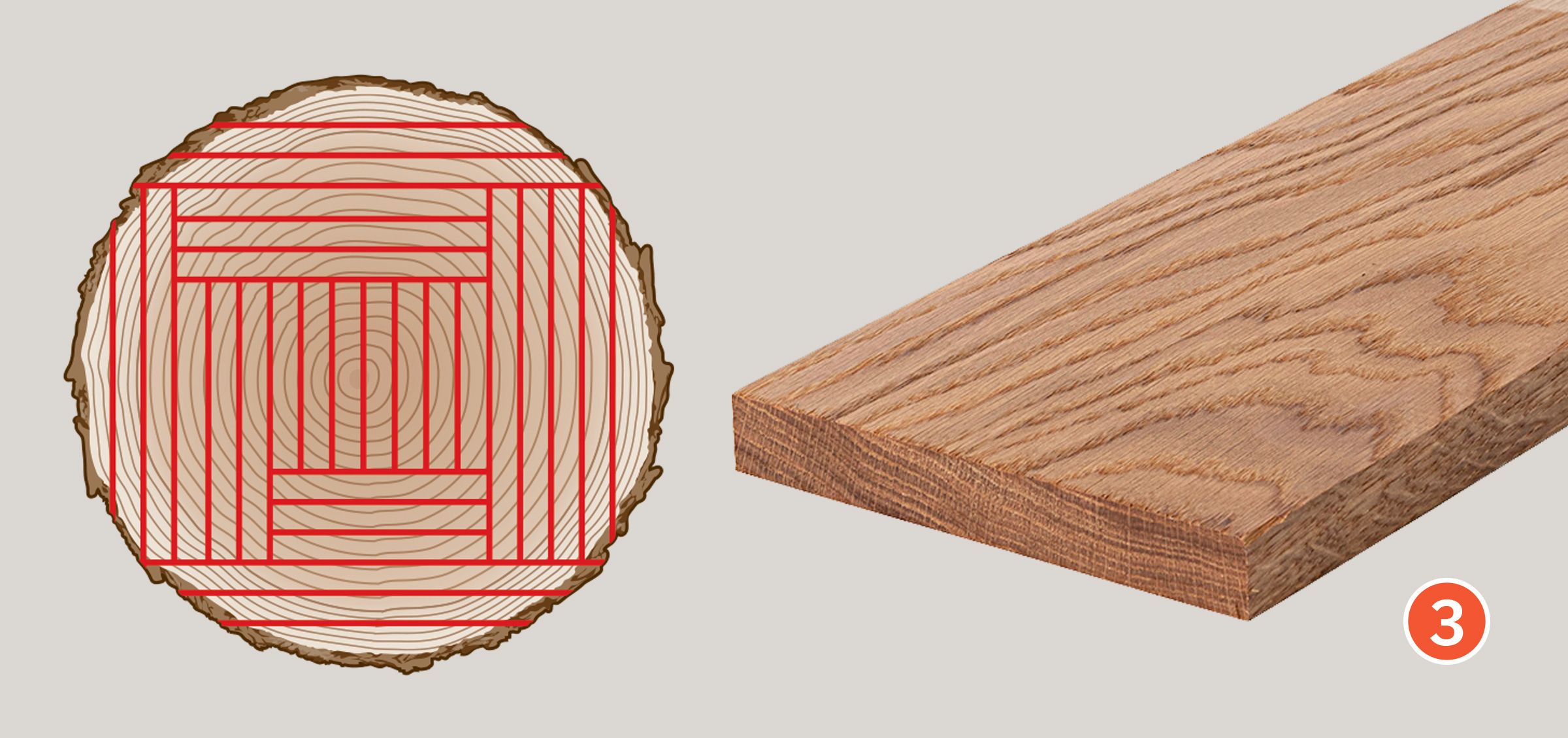
This flooring is affordable, but lacks the stability of quartersawn boards.
4. Live-sawn white oak
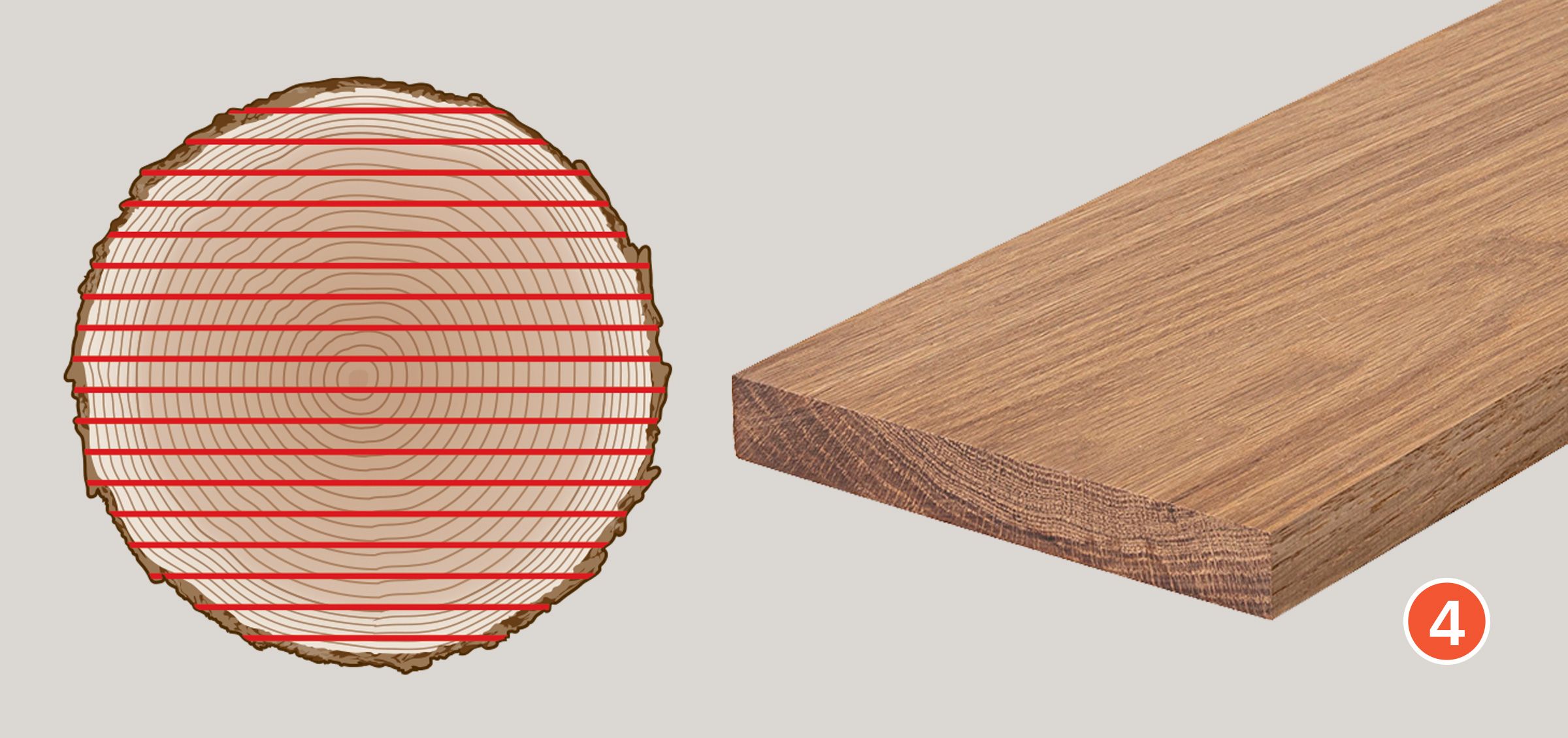
These boards tend to be wider and the most dimensionally unstable.
